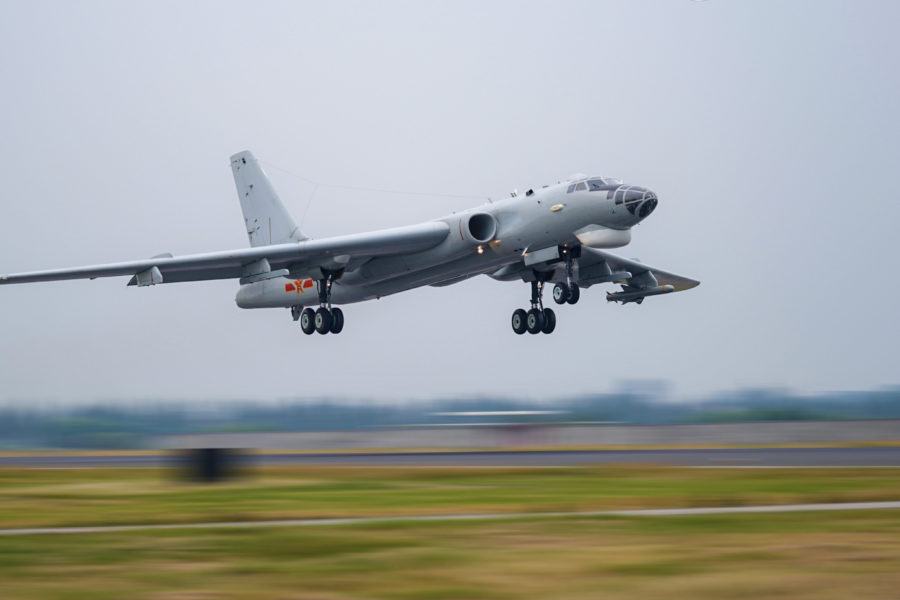China’s diverse nuclear arsenal makes it more survivable and would provide China with more coercive options in a conflict with the United States over Taiwan. The findings were the result of two summer 2022 tabletop wargame exercises conducted by the Center for a New American Security (CNAS) that each pitted China (Red) against the U.S. (Blue).
“A larger, more diverse nuclear arsenal not only increased the survivability of China’s second-strike capability but also gave the Red teams the ability to threaten or employ nuclear weapons in a limited fashion,” according to “Avoiding the Brink,” a CNAS report released in February. “In short, the Red teams felt that they had a secure second-strike capability and were better positioned to brandish nuclear weapons coercively and employ them if necessary.”
The report also indicated that China has no need to match the U.S. quantitatively when it comes to nuclear capability to be a bigger nuclear threat.
The findings show what China could do in some scenarios and the teams estimated some specific actions on the part of combatants.
“By the Red players’ estimation, the notional 700-warhead nuclear arsenal of the first [exercise] was sufficient to provide a secure second-strike capability and options for limited theater nuclear strikes, allowing them to brandish their nuclear weapons coercively and employ them, if necessary,” the report stated, noting that the same was true in the second exercise with an arsenal of 1,000 warheads. “The size of both arsenals and the diversity of delivery systems and warhead sizes (5 to 300kt) expanded the types of attacks Red could threaten and the set of targets that Red could credibly hold at risk.”
The wargame also revealed that neither team felt early use of nuclear weapons in a conflict was necessary, although both Red teams threatened their use early in each conflict hoping to stop U.S. involvement. Arriving at a conclusion similar to a CNAS wargame scenario in the spring of 2022, the report noted that a fait accompli for China is unlikely. A U.S. defeat of an initial invasion, according to the report, is also unlikely.
Though neither team thought the other would actually use nuclear weapons, a Red team employed a low-yield nuclear weapon against Guam after attacks on the Chinese mainland. The report emphasizes that the battle to disable conventional capabilities could trigger such escalation.
“From China’s perspective, Guam is such a critical American power projection node that it needs to be disabled early in the conflict to give the Chinese invasion a chance of succeeding,” the report states. “The problem is that attacking Guam or the Chinese mainland crosses Blue or Red lines and thus comes with significant risk of setting off a tit-for-tat escalation spiral.”
Preconceived notions on the part of participants were noted as well. For example, the report stated that Blue players were “stuck in a Cold War mindset” assuming limited nuclear use could be countered by strategic superiority. Red players, on the other hand, hesitated to stray from China’s current known nuclear posture.
“Blue players had trouble believing that Red would cross the nuclear threshold, given its current and past doctrine and posture, and underappreciated the fact that China did not need nuclear parity to consider limited nuclear use,” the report noted. “The Red teams were willing to consider limited nuclear use because they did not believe that Blue would respond with a nuclear weapon in kind and thus they could keep the conflict from unduly escalating.”
Still, the results of both wargames indicated that pressure to use nuclear weapons was low, and China’s current posture is to use nuclear weapons only as a retaliatory measure.
Recommendations from the exercises include continuing to explore ways China might employ nuclear weapons in a Taiwan conflict and ensuring national security personnel understand China’s increasing nuclear capabilities. As a short war appears increasingly unlikely, the report also emphasizes further examining protracted war scenarios. In addition, the report suggests building up research on China’s nuclear capabilities in a similar manner to the research conducted for decades on Russia’s nuclear program.
